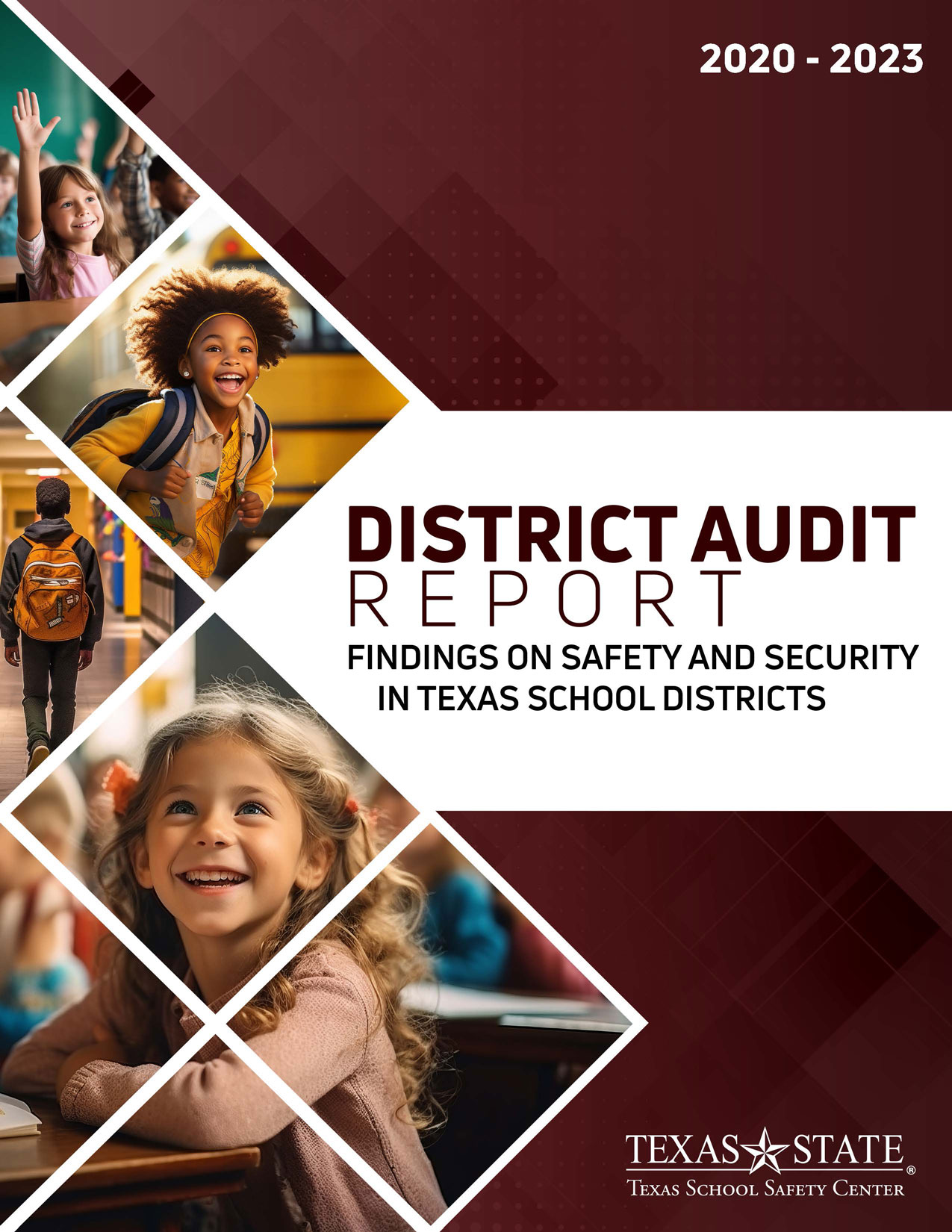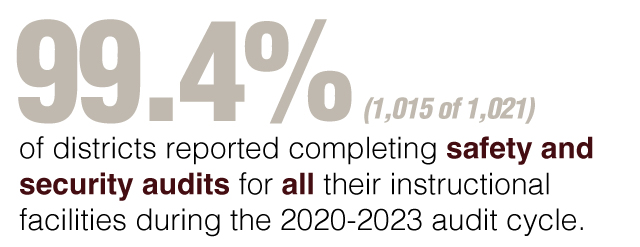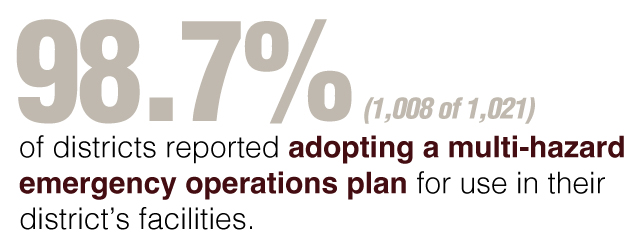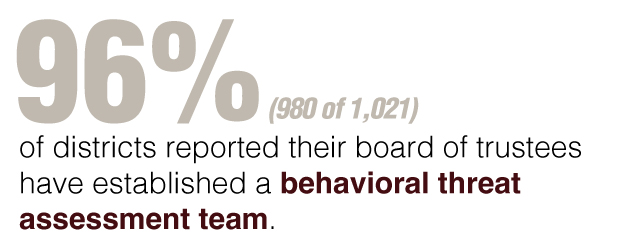TxSSC
2020 - 2023 District Audit Report (DAR)
Findings on Safety and Security in Texas School Districts

The purpose of the DAR is to provide key results of the safety and security audits completed by Texas independent school districts. The Texas Education Code (TEC) requires districts to complete safety and security audits of their facilities once every three years, in accordance with procedures developed by the Texas School Safety Center (TxSSC) or a person included in the registry established by the TxSSC (§37.108(b)).
The TxSSC provides guidance for independent school districts to develop safety and security audit procedures as well as tools to assist in the assessments (§37.207(a)(1)). The TxSSC School Safety and Security Audit Toolkit includes step-by-step guidance and job aids for conducting audits, as well as comprehensive district facility audit checklists. The toolkit contains a series of spreadsheets with evaluation statements for various facilities and functions. These statements are a combination of best practices, promising practices, and/or requirements appropriate for certain types of facilities. Model safety and security audit procedures developed by the TxSSC are available for use by districts or contractors to conduct safety and security audits. Neither the TEC nor administrative rules require that school district personnel conducting the audit hold a specific certification. Whether districts decide to conduct their own audit or hire someone from the Texas School Safety and Security Consultant Registry, it is a best practice to ensure the audit is reviewed from various disciplines or perspectives and include a cross-functional group of school personnel and collaborative community partners.

The term "audit" is included in TEC §37.108 and used throughout this report for consistency. The process was developed to serve as an ongoing self-assessment and process of identifying specific district, campus, or facility hazards, threats, and vulnerabilities and making improvements in safety and security plans and processes.
Methods
The TxSSC collected specific safety and security audit information from the November 1, 2020 to August 31, 2023, audit cycle. The Texas Legislature authorizes the TxSSC to determine the method used to collect audit results. Data were collected via the DARtool, an online reporting mechanism developed by the TxSSC and deployed using Qualtrics (an online survey programming software).
The DARtool was comprised of eight sections, which included the following:

- Section 1 included independent school district demographic items such as the name of the person reporting for the district, the type of geographical area where the majority of students in the district live, and cumulative district enrollment.
- Section 2 encompassed questions regarding the safety and security audit process such as how many facilities were present in the district and the elements reviewed during district safety and security audits.
- Section 3 included questions regarding school safety and security committee composition and operations.
- Section 4 included questions pertaining to emergency management processes such as district multi-hazard emergency operations plan (EOP) composition and practices.
- Section 5 included questions about behavioral threat assessment, suicide prevention and trauma-informed care information.
- Section 6 encompassed questions about bullying prevention policies and procedures.
- Section 7 included questions about active threat exercises such as whether an active threat exercise included an active shooter simulation.
- Section 8 encompassed additional safety and security information questions that assessed programs and practices not necessarily mandated by law to provide the TxSSC and the Texas Legislature with supplemental information regarding the efforts of independent school districts to establish model safety and security practices.
The TxSSC collected safety and security audit information from 1,021 independent school districts.
Key Findings
- 1,015 of the 1,021 (99.4%) districts reported completing safety and security audits for all their instructional facilities during the 2020-2023 audit cycle.
- 366 of the 1,021 (35.8%) districts reported that they had not reported their safety and security audit results to their district’s board of trustees.
- 1,018 of the 1,021 (99.7%) districts reported having a school safety and security committee.
- 933 of the 1,021 (91.4%) districts reported having a designated individual in an emergency management coordinator or school safety coordinator role.
- 1,008 of the 1,021 (98.7%) districts reported adopting a multi-hazard emergency operations plan for use in their district’s facilities.
- 980 of the 1,021 (96%) districts reported their board of trustees have established a behavioral threat assessment team.
- 413 of the 1,021 (40.5%) districts reported conducting an active threat exercise, including an active shooter simulation during the 2020-2023 audit cycle.

Recommendations

The findings from the 2020-2023 audit cycle identified seven key areas to serve as recommendations for improvement toward the safety and security of independent school districts in Texas. The following recommendations are proposed to further help school districts pursue enhancing their safety and security posture.
- Districts must develop a process to ensure that safety and security audits are conducted for all instructional and non-instructional facilities.
- Districts must report their safety and security audit results to the district’s board of trustees.
- Districts are encouraged to designate an individual in an emergency management or safety and security coordinator role.
- Districts must continue to develop and implement multi-hazard emergency operations plans (EOP).
- Districts must ensure a hazard analysis is conducted as part of their EOP development process.
- Districts must establish School Behavioral Threat Assessment (SBTA) teams.
- Districts should practice their reunification plan or process, at a minimum, on an annual basis.
Refer to the Recommendations section of the report for details and resources pertaining to each recommendation.